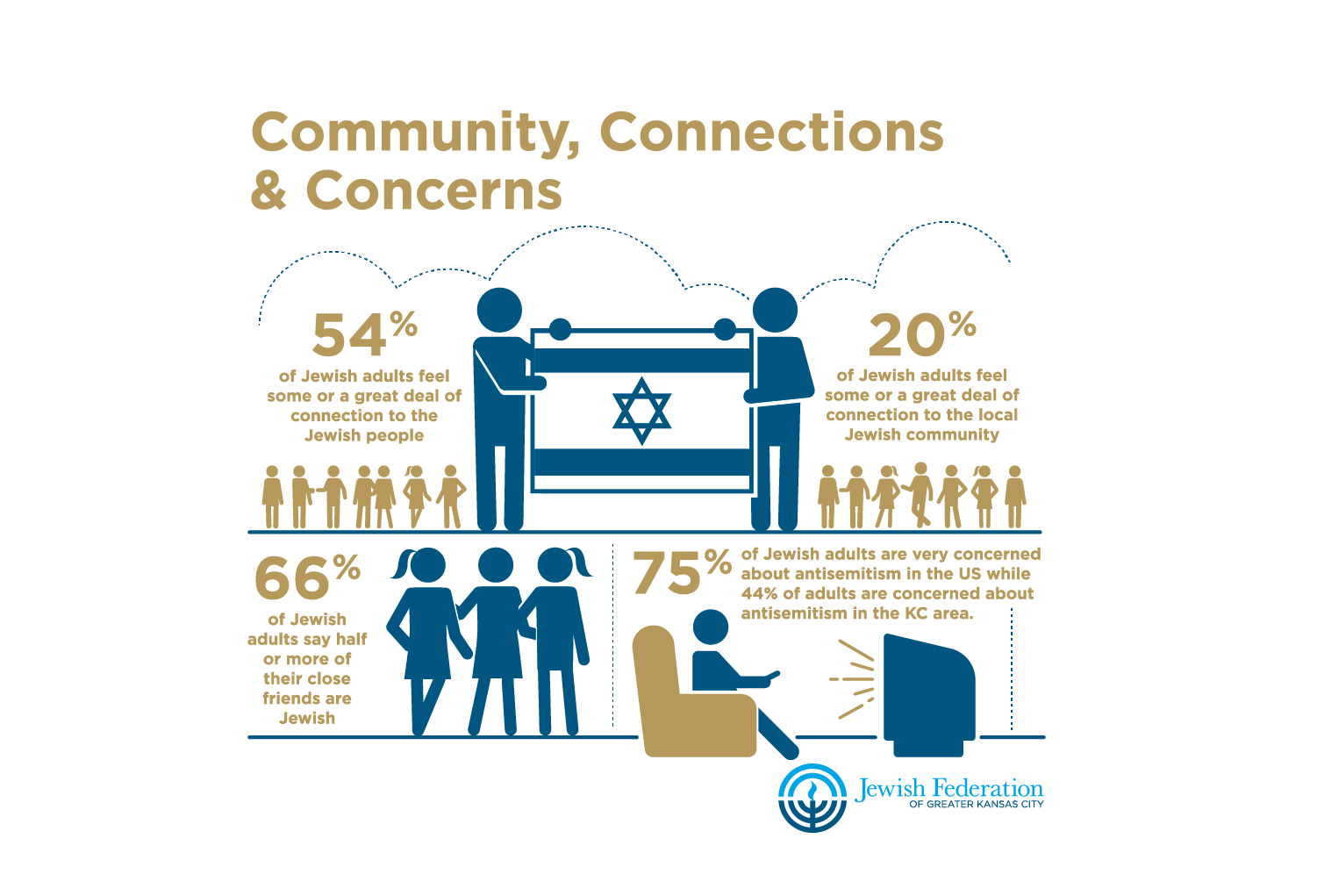The Greater Kansas City Jewish Community Study – the first comprehensive population and demographic study of the local Jewish community in more than 35 years – provides a lot of data and key insights about our Jewish community. Now, the plans to act on the new information are being formulated.
The community study was conducted between April and July 2021, with 989 respondent households. Jewish Federation of Greater Kansas City, which commissioned the study, released the results this past March and since then has convened meetings with community leaders and representatives from community institutions to review the data and insights and identify areas for community-wide collaborative planning.
“A lot has changed in the 30-plus years since we last undertook a study like this. The insights from this study can help guide our institutions and congregations better engage and support our community as we continue to grow and evolve,” said Amanda Palan, who has been involved with the study from the beginning. She was part of the initial community study committee and will be leading one of the study task forces going forward.
Upon receiving the results of the study, Federation formed the Community Study Planning Committee to identify priority areas for community-wide planning based on the study’s results. The committee consisted of eight experienced community leaders who reviewed the study and determined two initial priority areas for community-wide planning, according to Andi Milens, Federation’s Senior Director, Community Building.
The first priority is collaborations within the community; a task force has been created to look into applicable processes, such as how community organizations might streamline communications. The task force began meeting on July 6.
"The question will be, ‘How can we make it easier for people to connect with the community?'” Milens said.
The second area of priority for the planning committee is looking at engagement/connectedness with members of our community.
"The study told us that we’re doing a great job engaging half the community that's already engaged, but not the other half,” Milens said. “The question is, how can we help the unengaged half connect to the degree that they want to connect?"
It was noted in the study, particularly with interfaith families and newcomers to the area, that even those wanting to connect to the community found it difficult, and there was a good number of people feeling that they weren’t welcome. The planning committee identified this as an important area to address collaboratively.
Jewish Federation is planning to host a series of parlor meetings in the community to get feedback, and will then form a task force.
“We know that doing more of the same isn't going to engage more of our community, so we need to hear from people who want to connect but haven’t yet found their way,” Milens said. “What can we do to not just open our doors, but actually welcome people and give them that sense of belonging?”
Federation staff members also recently met with a statistician in the community to help interpret the raw data, which could provide even more insights and potential areas of focus for the future. As they dive into the raw data, Milens said, community needs will become even more evident.
“There’s such complexity to this study, so much information, that we’re going to continue to digest it,” she said. “We’ve identified these initial priority areas, and we’re moving forward based on them, but we’re also going to continue to learn from this study about the needs of the community and work with our community institutions to continue to meet those needs.”
She gave several examples of other questions/areas the community might address in the future as a result of the study, including:
- How many people in our community are aging in place, and what kind of services will they need where they are?
- Close to one in four households responded that they’re just managing or not making ends meet. What can be done as a community to help those families?
- We know that the vast majority of our community members feel connected to the Jewish people, but fewer of them feel connected to our local Jewish community. How can we help them make that connection?
“Federation wants this to be a community process. We want the community invested in responding to the study,” Milens said. “We’re all in this together. We’re all invested in growing and strengthening our community, so by bringing the community together to discuss the paths forward, that is how we will most effectively achieve that.”
And, as Palan pointed out, individual organizations and synagogues can leverage the results of the study immediately if they want to.
“Federation funded this study to make the entire community stronger, and the results are available to everyone,” she said. “Individual organizations can use the study to improve the services and programs that they provide to their population.”

